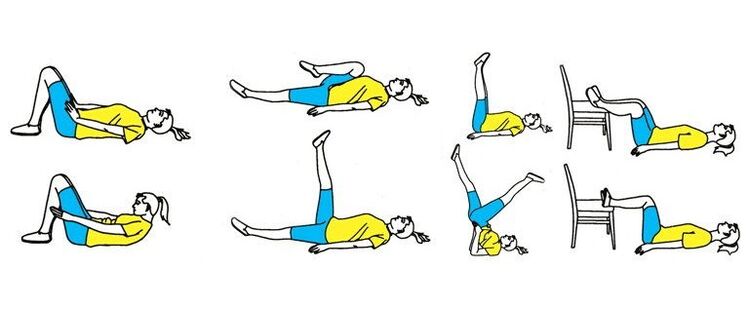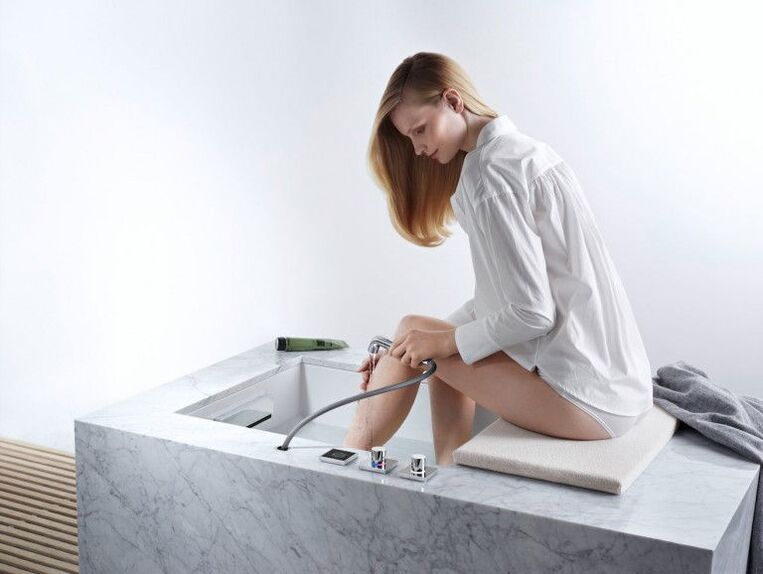Among the many problems faced by modern women, not the last place is occupied by varicose veins in the legs. Regular performance of simple exercises for leg varicose veins can help in the early stages of the disease. Of course, the problem can be solved cardinally - with the method of surgical intervention, but often therapeutic physical activity will suffice, it all depends on the stage of development of the disease. Before starting the fight against varicose veins, it is recommended to learn more about the disease, and only then decide on the need for exercise therapy.

Types of varicose lesions
Medicine divides varicose veins into:
- congenital;
- acquired.
Both forms are expressed in the expansion of the veins in the legs. Acquired varicose veins are most often observed in women whose work is associated with large or prolonged loads on the legs. For example, the disease often develops among vendors and teachers. The profession involves a woman standing for a long time, so the load on the legs may not be excessive, but constant, which in the end often ends with the appearance of pain and the development of varicose veins.
Congenital varicose veins are inherited from the grandmother to the mother, and from her to her daughter. If the older generation suffers from varicose veins, then the probability of its manifestation in girls is very high. To prevent the appearance of hereditary varicose veins of the legs, special exercises for lower extremity varicose veins help. Regularly doing physical exercises, a woman can not only prevent the onset of the disease, but also reduce external manifestations with the expansion of veins in the legs.
It happens that varicose veins in a woman are not yet noticeable, but the risk of their occurrence exists. In this case, it is recommended to regularly engage in certain physical gymnastics. The same exercises are also suitable for the early expansion of the identified veins.
You should know that gymnastics for varicose veins on the lower part of the legs includes elements that require you to lie on your back with the legs up. In addition to fighting varicose veins, the proposed set of exercises helps in strengthening the abdominal muscles.
Prevention and treatment of leg veins
At risk of disease onset and in the early stages of disease, the following set of exercises is recommended.
- Slowly lift the leg up as you exhale, followed by holding it vertically. This is followed by lowering the legs slowly while inhaling. On the first exercise, you may feel a slight tension in the lower part of the leg, given by a slight pinch of the leg. The exercises are performed up to twenty times and repeat four approaches, while the legs alternate. The meaning of the exercise: when the leg is raised, the blood flows out of the vein pocket more actively, and when the leg is lowered, the vein is filled with blood abruptly. This type of leg vein training is effective against varicose veins.
- Lying down, do circular movements with your feet. The movement of the foot should be smooth and unhurried, while the lower part of the foot will be tense in a certain direction. Initially, the foot rests on the floor, but after a few movements, it can be raised slightly and the exercise continued, maintaining the weight. This leg movement is good for blood flow.
If you are overweight, then the load on the vein walls increases significantly, and this inevitably leads to the development of varicose veins. Often, doctors recommend taking blood -thinning medications for the treatment of varicose veins, which facilitates the work of the veins. There are many such medications, so it is not recommended to take them yourself. It is better if an experienced doctor chooses the necessary funds for you.
In the prevention of varicose veins, it is most important to strengthen the walls of the venous muscles, where they are relatively thin. This can be achieved not only by doing physical exercise or undergoing complex exercise therapy. Against the weakness of the vein walls, a regular contrast bath can help perfectly. Alternate exposure to hot and cold water perfectly trains the leg veins.

There are simple therapeutic exercises for standing work against varicose veins.
| Action | Quantity | Benefits |
|---|---|---|
| Standing, transfer weight from heel to toe and vice versa. | 10-12 times | This exercise makes the lower part of the leg functional, producing a more active movement of blood through the veins; |
| Stand up, go up with your toes and slowly go down to the rest of the foot. | 10-12 times | This exercise, in addition to expanding the veins, allows you to strengthen the lower leg muscles and improve the shape and beauty of the legs. |
Work where a woman has to constantly sit can also lead to the development of the disease. In this case, a slightly modernized upgrade to the toes will help. The only difference with the previously recommended exercise is that you have to get down on your heels as sharp as possible, and you can’t raise your heels very high.
Running, biking or a playground?
Physiotherapy exercises can recommend many different exercises to train the veins. Relaxing running, rope jumping and other exercises will work perfectly against varicose veins. Cycling also helps a lot, but there are a few subtleties here. Leg vein training will be most active only if the seat is set as high as possible so that only the toes can reach the bottom pedal. When riding with this bike preparation, the lower part of the leg is actively reduced, increased pressure is applied to the veins, which makes blood circulation better.
If you find that with the expansion of the veins of the legs you begin to manifest clearly, then it is better not to delay, but immediately see a doctor. He or she will be able to give you an effective exercise plan if necessary. Only proper exercise will help keep the veins in your legs in perfect shape.
Among the many different programs and sets of exercises designed to combat varicose veins, one can choose the approach of Dr. Bubnovsky, whose clinic studies kinesitherapy as a way to combat various diseases. To prevent varicose veins and treat diseases that have emerged, clinicians develop an individualized exercise program that carefully takes into account the individual characteristics of the patient.























